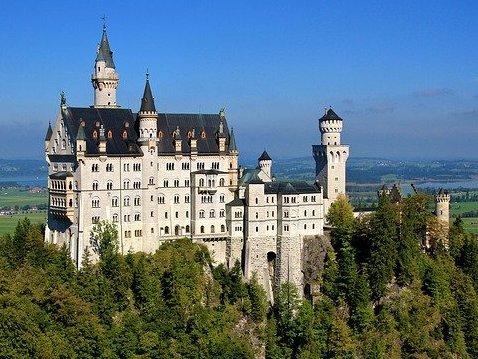
Castle Neuschwanstein
The Castle Neuschwanstein was built 1869 to 1886 under King Ludwig II. of Bavaria at the place of the ruins Vorder- and Hinterhohenschwangau in the style of a medieval castle. Today it is probably the most famous building of King Ludwig II and is situated in a unique location on a rock above Gorge Pöllat - with a breathtaking mountain view.
The design of the interiors is based primarily on the contents of German knightly legends and the musical ideas of Richard Wagner. For example, the Singers' Hall, which is reminiscent of the Wartburg near Eisenach, is decorated with a few key scenes from the Parzival Poem and the legend of the Holy Grail. An absolute highlight is the 15-metre high throne room, which is decorated in blue and gold and has a beautiful mosaic floor. It is modelled on the style of a Byzantine basilica. However, the king died before the hall could be completed, so the throne room was never used.
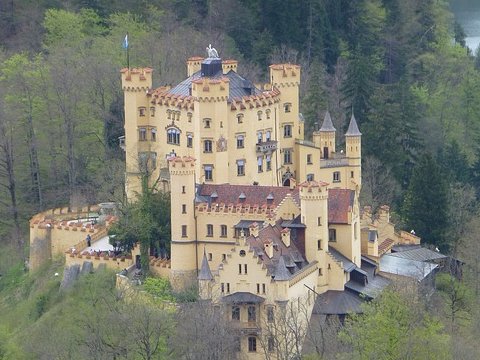
Castle Hohenschwangau
Above Alpsee lies the dreamy Hohenschwangau Castle. According to sources from 1523, Schwanstein Castle was in poor condition at the time. Due to the thin walls it could not be called fortified any more. Therefore the Augsburg patrician Paumgarten had it repaired by the Italian master builder Licio de Spari between 1538 and 1541. However, this was so costly and extensive that it was more likely that the castle would be rebuilt than restored. Afterwards, the lordship of Schwangau chose the castle as their headquarters.
Over the centuries, however, after several changes of ownership, the castle fell into ruin again until Crown Prince Maximilian of Bavaria succumbed to the charm of the place and bought it. From 1832 to 1836 he had Schwanstein Castle rebuilt in the neo-Gothic style, after which it became Hohenschwangau Castle and served King Maximilian II as a summer residence. This explains the beauty and richness of the interior decorations and the numerous murals. They also tell of the praiseworthy heroes of German history and legend, not least of the glorious deeds of the Wittelsbach generation living at that time. King Ludwig II spent his childhood and youth here.
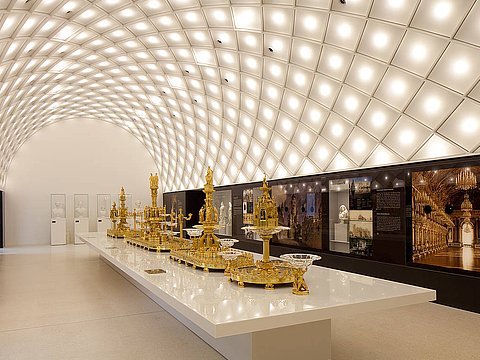
Museum of the Bavarian Kings
For many years the former Grand Hotel "Alpenrose" lay dormant beneath the castles of Neuschwanstein and Hohenschwangau, until the historic building was converted into a museum and restaurant.
The Museum of the Bavarian Kings tells the many centuries of history of the House of Wittelsbach, one of the oldest dynasties in Europe. The history of the family is vividly presented in a walk-in family tree.
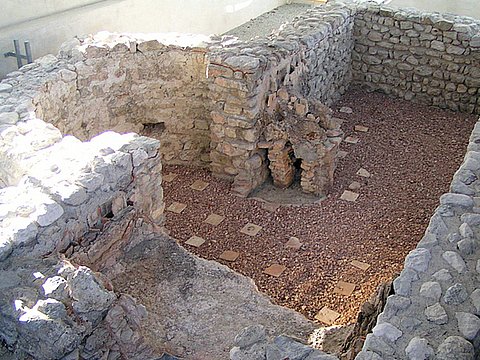
Ancient Roman Villa on Tegelberg
From the so-called Roman villa, the first traces of an extensive Roman estate (villa rustica), founded in the middle of the 2nd century AD, were discovered in 1934 in the shadow of Tegelberg mountain.
In 1966 and 1996 further buildings were excavated during the construction of the Tegelberg cable car valley station and the summer toboggan run.
The rural architecture also includes private baths; they served not only the bathing pleasures of the Romans, but also the high standards of daily personal hygiene.
These facilities even had small family baths, known from the public baths of the cities or from the imperial baths.
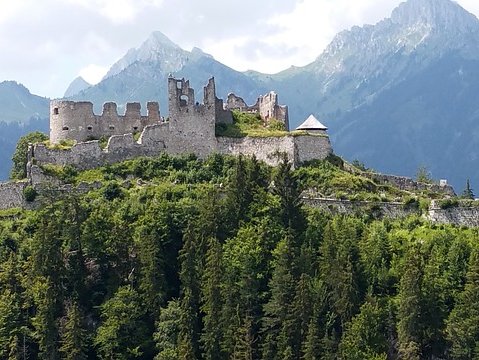
Ehrenberg Castle Museum
Those who go to the Ehrenberg Castle Museum in Reutte can embark on a journey through time; for here one gets an unforgettable insight into the life of the inhabitants of a medieval castle.
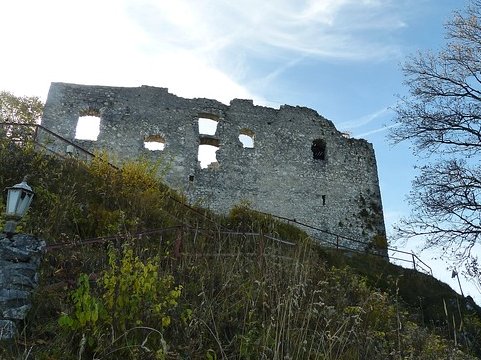
The Castle Ruin Falkenstein
Built on Falkenstein (1277 m), the Ruins of Falkenstein Castle near Pfronten in the Allgäu are the highest castle ruins in Germany. From the castle you have a wonderful view of the Vils valley below and the peaks of the Tannheim mountain range. The castle itself mainly consisted of a "solid house" and a weak curtain wall. About 50 metres below, where the castle hotel is located today, were the farm buildings.
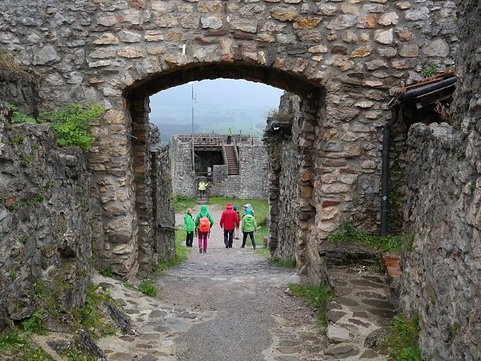
The Castle Ruin Eisenberg
Together with the neighbouring Hohenfreyberg Castle Ruins only 300 m away, the Eisenberg Ruins are one of the most important castles in the Allgäu. Only the foundation walls and cellar vaults of the inner buildings of this rare mantle-walled castle have survived. A visit to the Eisenberg Castle Museum in Zell is recommended. During the conservation measures on the ruins of Eisenberg more and more finds were brought to light. Therefore the Eisenberg Castle Association decided to establish a castle museum. The 11 showcases and numerous display boards document the history of Eisenberg Castle.

